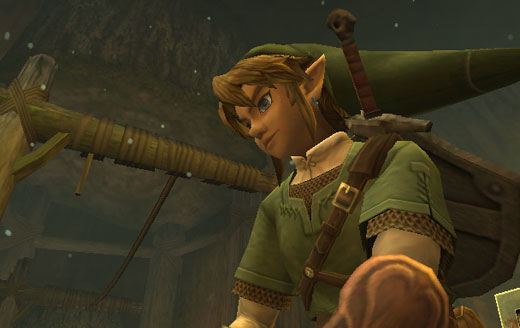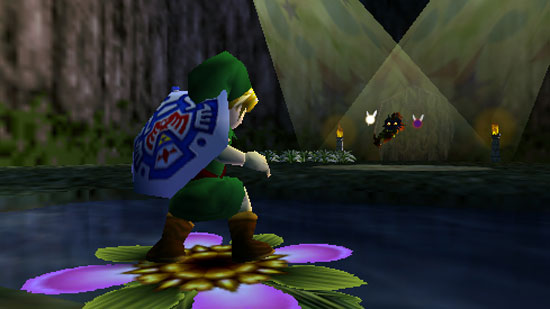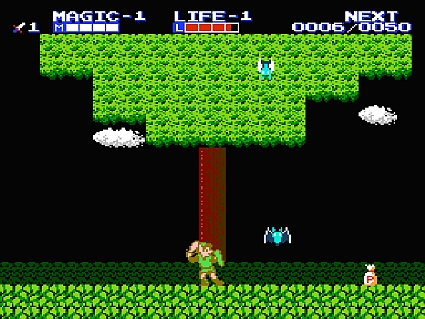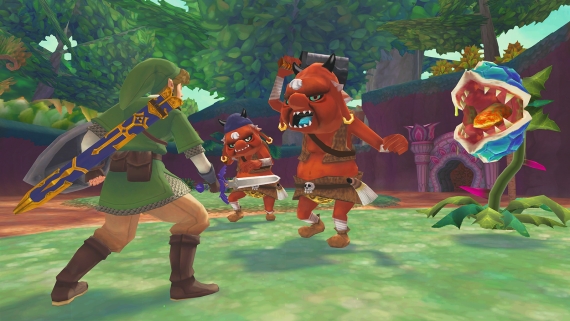Ever since E3 2010, hype has steadily built up around The Legend of Zelda: Skyward Sword, and understandably so. Nintendo is positioning this new Zelda title to become the game that finally changes the tried and true, yet ultimately staling, Zelda formula that has been with the series ever since Link’s first days on the NES. The question is: How can Nintendo accomplish such a lofty goal? So far, the going looks tough for Nintendo. Fans have already decided that Skyward Sword will be nothing more than a combination of Wii Motion Plus controls and the art styles and game mechanics of The Wind Waker and Twilight Princess. While that may appear to be true at first glance, it would serve fans well to remember that during Twilight Princess’ development, series creator, Shigeru Miyamoto, insisted that “Twilight Princess will be, without a doubt, the last Zelda game as you know it in its present form." To figure out what this quote means for Skyward Sword, it is important to understand what exactly Twilight Princess did for the series.
Whether or not gamers played it on Wii or Gamecube, Twilight Princess represented a pivotal moment in the series that went far beyond the initial Ocarina of Time 2.0 accusations the game received. What Nintendo had aimed for and achieved with Twilight Princess was the culmination of nearly every success the series had attained so far. For starters, the game had Ocarina of Time’s game-play mechanics, Majora’s Mask’s dark narrative style, A Link to the Past’s dual world adventuring, and The Wind Waker’s technologically adept engine. The list could go on as to how each games in the series contributed to Twilight Princess’ make-up, but doing so would also reveal the game’s greatest weakness: It is the culmination of all these things. Sure, the game does venture beyond Ocarina of Time 2.0 territory when it combines all of these elements well, but Ocarina of Time had, unfortunately, already accomplished a similar cumulative task almost a decade before. Link’s first foray into the third dimension could not have existed had it not been for games that had come before it, and current series director, Eiji Aonuma, has long understood this point. Much like today, The Zelda franchise was in desperate need of a freshening up by the time Aonuma had taken charge of the series, and it was plain to him that Ocarina of Time, while impressive, had done little more than to transplant 2D game design into the third dimension. His response to this problem was Majora’s Mask.
Link’s second adventure on the Nintendo 64 was polarizing, to say the least, but it didn’t approach change haphazardly, as some feared it would. Aonuma took great care in crafting Majora’s Mask over the course of the eighteen months it took to develop the title. Rather than throw out everything that had been established by Ocarina of Time, the team behind Majora’s Mask decided instead to take what had been done before, condense it, and then turn it on its side. Link suddenly didn’t have to run across a huge, sprawling world anymore. The real estate of the game was quite tiny in comparison to previous games. Also, there was no longer any need to constantly alternate between field running and dungeon crawling due to this new, dense twist on world design. By imposing an ever-present, three day time limit on the world of Majora’s Mask, Aonuma allowed for more focus on peripheral characters and intricate side quests, which gave the player freedom to choose when and how they progressed through the game’s compact and rich world.
The two men behind The Legend of Zelda must have remembered these core tenants of Majora’s Mask when going into Skyward Sword’s development. In a recent session of Nintendo’s “Iwata Asks” video series, Aonuma stated, “there was a sense that we had made [Twilight Princess] too big.” To which Miyamoto agreed and followed up, saying that, with Skyward Sword, the focus is “not about game density. It’s about the density of play.” Although this doesn’t really say that Nintendo has pursued Majora’s Mask’s brand of compactness entirely, it does suggest that they have retained the sense of game-play design that made the second Nintendo 64 Zelda such a tightly crafted product. Simply put, good game-play design must be evident early on in a game’s development, or the game isn’t worth making, a point Aonuma hinted at later on in the “Iwata Asks” session. “I’ve been talking about this with Miyamoto-san,” he says, “and we’ve been throwing around the phrase “back to basics” as we were [sic] asking each other what core elements made The Legend of Zelda games fun.”
It certainly would be of great benefit to not only go “back to basics” for Skyward Sword but also to revisit one of the Zelda franchise’s most overlooked games, Zelda II, to see where some of those basics come from. Very few people have played the second NES Zelda, but, like it or not, Zelda II introduced the majority of what comprises Link’s current repertoire of items and moves, from magic use all the way to how Link faces his enemies in combat. The introduction of these elements provided the series with a more organic feel. In the original The Legend of Zelda, Link jabbed everything. Now, Link dodged enemy blows and had to constantly look for openings in enemy defenses. Skyward Sword is also aiming for a similar level of organics in Link’s combat, as well as his general movement. Gone are the days of Link’s super human strength. Players must now manage a stamina meter to ensure that Link does not tire himself out while traversing vines and pushing around large objects. To offset this potentially annoying new feature, Nintendo has also given Link a greater range of movement. For the first time ever, Link can sprint and can also run up walls in order to grab onto ledges that are slightly taller than him.
Skyward Sword’s user interface is getting some new tricks, as well. Miyamoto and Aonuma feel that menus bog down the purity of Zelda’s game-play experience. To demonstrate what they mean, here is a typical combat scenario that crops up in the series far too often: A battle begins, but the player doesn’t have the item they need equipped. So, the player calls up the main menu, assigns the necessary item to a button, exits the menu, selects the item, and then, after all of that, finally uses the item. During that whole process, the excitement of battle diminishes exponentially. Nintendo claims that they have fixed this problem and have cited Wii Motion Plus controls as the solution, and tedious menu surfing has now been replaced with a single button press and the flick of a wrist. However, the Skyward Sword team has not drawn the line at menu optimization. As Aonuma recalls, “I [loved] the double hookshot that we had in Twilight Princess; I think it’s really unique. But after you cling on to a wall and then you aim at the next spot, it takes a while each time. You lose track of the pointer.” Thus, the team has sought to increase the fluidity of play, as well.
And, although fluidity may not have been one of Zelda II’s selling points, there is at least one more component that Link’s newest title could learn from that game: diversity of play. Anyone who has played Zelda II knows that from minute to minute, Link could be doing anything from traipsing around a top-down, overworld map to spelunking caves, chatting up town folk, and fighting randomly spawned enemies from a side-scrolling perspective. Back in the 1980s, so much diversity was almost too much to handle for fans of the original Zelda. Then again, maybe what the Zelda series needs more than anything else detailed in this article is a dramatic upheaval the likes of which gamers have not been seen since Zelda II. As it turns out, Nintendo has already hinted at a similar level of change. Swordless dungeons and areas that blur the lines between field, town, and dungeon are said to be waiting for players in Skyward Sword.
With that, it seems appropriate to return to the original question this article presented: How can Nintendo accomplish their lofty goal of properly evolving the Zelda formula? Apparently, making good on that task is more doable than anyone may have thought possible at this point. Aonuma and company have done well to go “back to basics,” but whether or not they ended up turning to the franchise’s two black sheep for inspiration is up for speculation. However, the bottom line is that Nintendo realized Twilight Princess was pushing it for what players would continue to want out of a Zelda game. That, to be sure, is a success in and of itself, even if Skyward Sword fails to change up the Zelda formula in the long run. Perhaps that’s the new question, then. Nintendo has definitely proven that they have the ability to evolve the series with Skyward Sword, but will they ultimately do so? Delays notwithstanding, here’s hoping Nintendo will answer that question with a resounding yes in 2011.